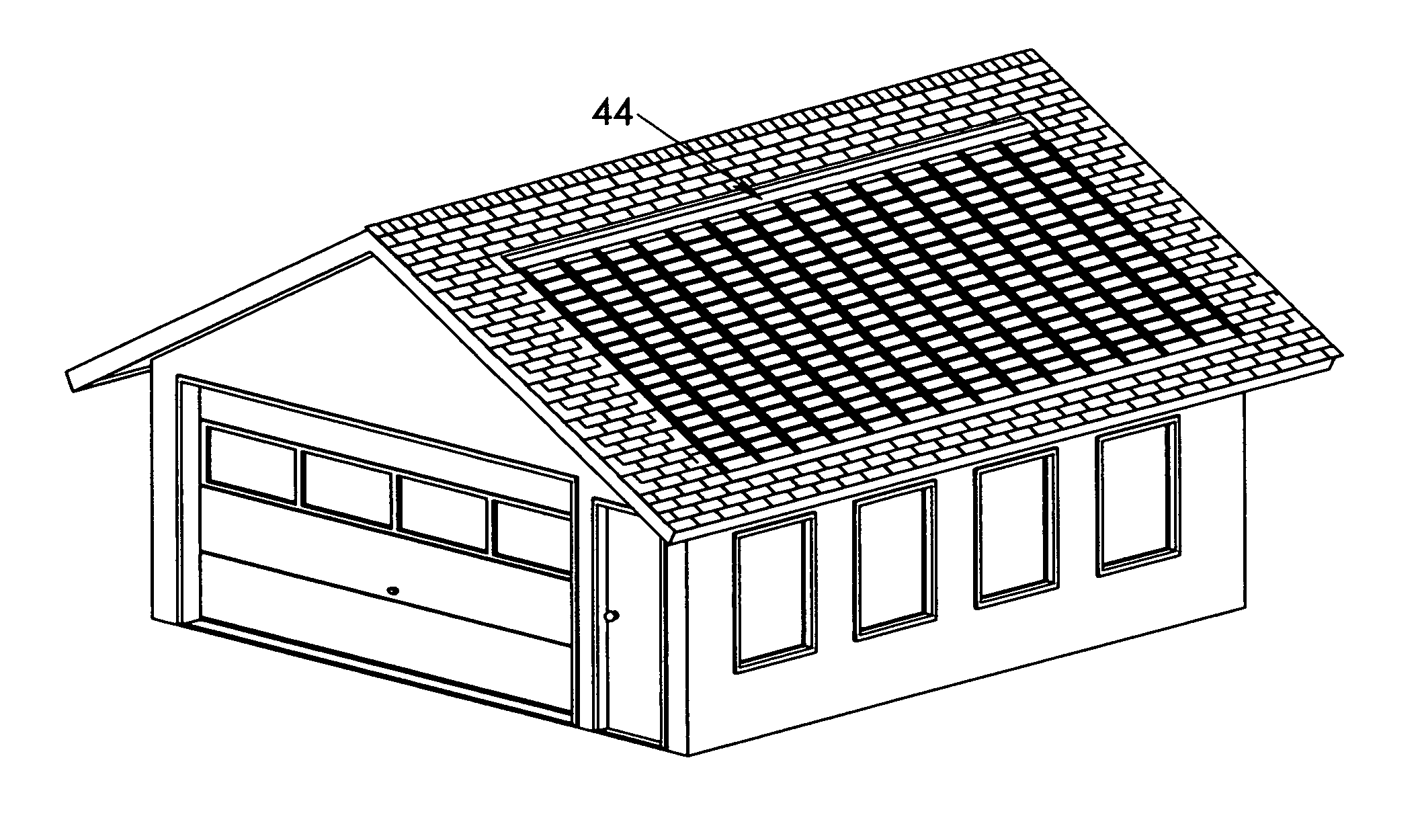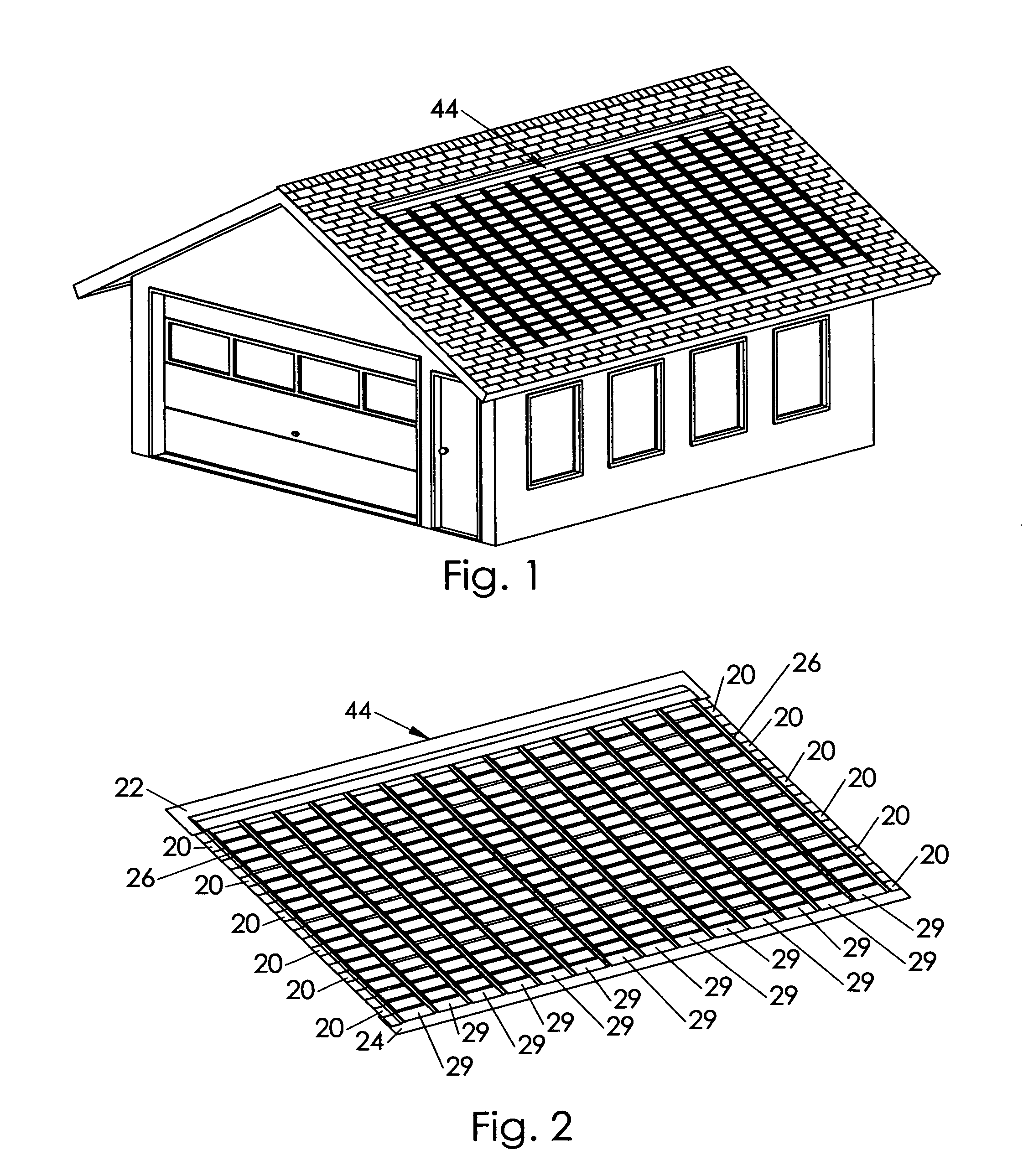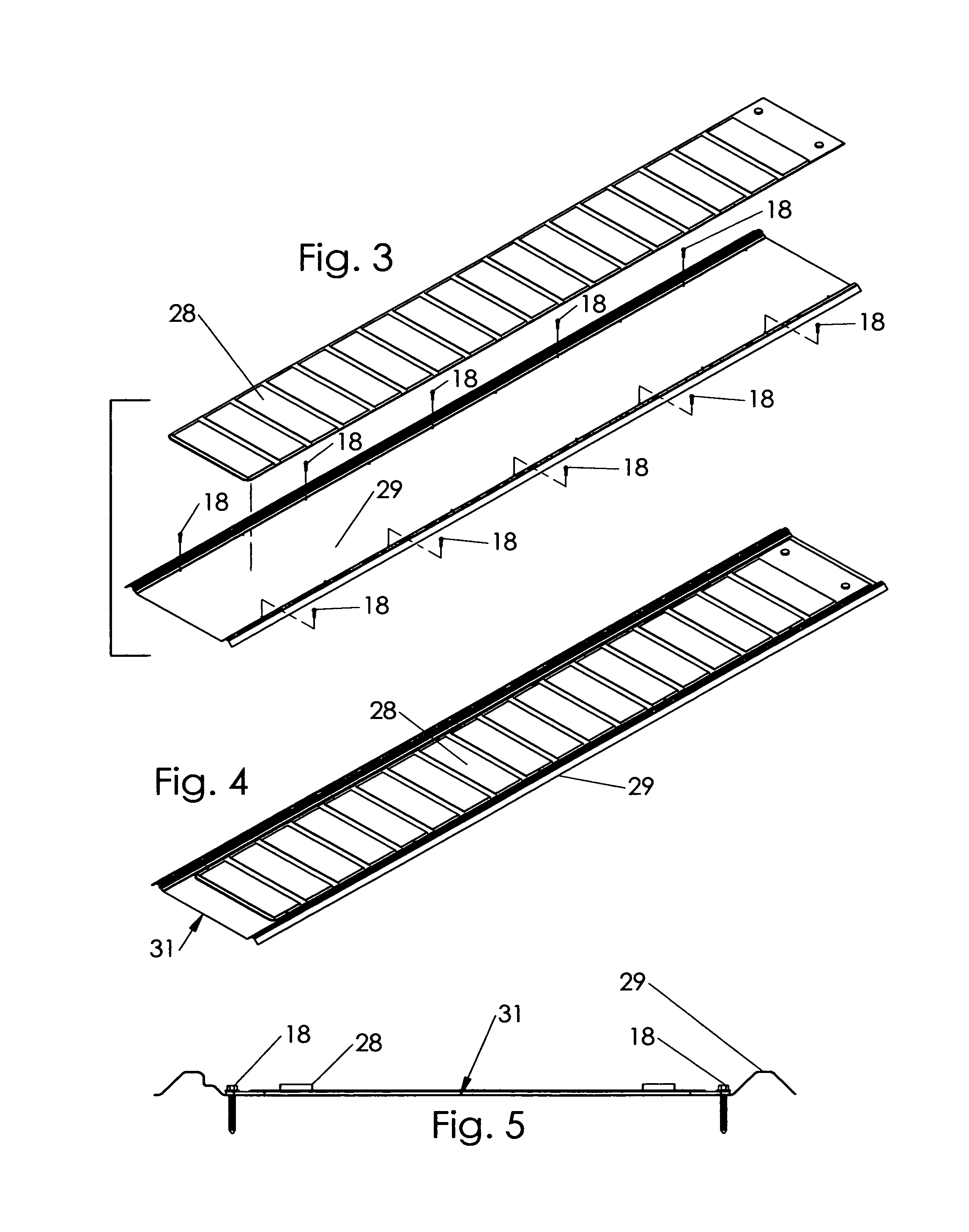Asphalt roof integrated photovoltaic
a photovoltaic and asphalt roof technology, applied in the direction of heat collector mounting/support, pv power plants, light and heating equipment, etc., can solve the problems of roof system, difficult or impossible to service the photovoltaic system, and the manufacture of solar cells capable of generating electricity
- Summary
- Abstract
- Description
- Claims
- Application Information
AI Technical Summary
Problems solved by technology
Method used
Image
Examples
embodiment
Preferred Embodiment
[0046]A preferred embodiment of the roof integrated photovoltaic panels and flashing system is illustrated in FIG. 1 (isometric view of photovoltaic system integrated into an asphalt roof) and FIG. 2 (isometric view of a photovoltaic system). The PV system assembly 44 includes starter flashing 24 that sits on top of asphalt roofing, on top of the starter flashing 24 are several PV solar base roof panels 29. Step flashing 20 is formed to cover the structural ribs on the sides of the roof panels 29 and also the other side of step flashing 24 is flat to form fit into each row the asphalt shingles. Counter flashing 26 is formed to match the profile of the structural rib of panel 29 and step flashing 20 this provides extra weather proofing. The edges of counter flashing 26 are hemmed to prevent capillary action of water between the step flashing 20 and counter flashing 26. One of the structural ribs on panel 29 is contoured to break capillary action of water when pane...
PUM
 Login to view more
Login to view more Abstract
Description
Claims
Application Information
 Login to view more
Login to view more - R&D Engineer
- R&D Manager
- IP Professional
- Industry Leading Data Capabilities
- Powerful AI technology
- Patent DNA Extraction
Browse by: Latest US Patents, China's latest patents, Technical Efficacy Thesaurus, Application Domain, Technology Topic.
© 2024 PatSnap. All rights reserved.Legal|Privacy policy|Modern Slavery Act Transparency Statement|Sitemap



